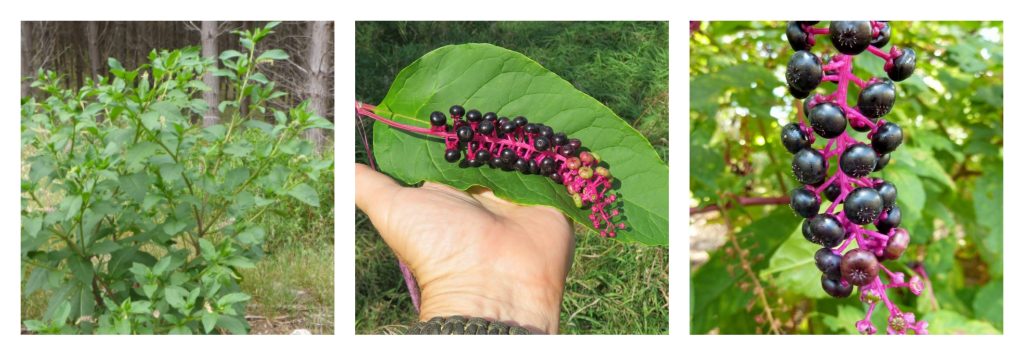Have you seen this plant?
This plant – seeds, berries and leaves – is toxic to both humans and livestock and can contaminate agricultural produce.
Pokeweed (Phytolacca americana) is a relatively new weed for Western Australia and the focus of an on-going collaborative program to eradicate this weed with government, our south west recognised biosecurity groups and industry working together. The aim is to control all pokeweed plants prior to them setting seed in summer. This weed remains classified as a C2 (Eradication) category by the Department of Primary Industries and Regional Development (DPIRD). All community members are asked to the lookout for this weed, and report any suspected sightings (see below for reporting options).
Pokeweed’s most distinctive characteristic is showy purple-black berries which have been described as grape-like clusters (immature berries are green, turn white and then blackish purple).
Why Pokeweed Matters Pokeweed:
Pokeweed is an environmental weed and can also affect agricultural activities by contaminating produce. All plant parts, especially the root, contain numerous saponins and oxalates and can be fatally toxic to humans and livestock when ingested. The seed is readily spread by birds and machinery if proper biosecurity practices aren’t observed. The plant was used in traditional medicine but can have fatal consequences if not prepared correctly. Birds are unaffected by the natural chemicals contained in the berries and eat them, spreading the seeds. Seedlings are often found under roosting trees. Seeds can also be transported in soil. The plant also regrows from the thick central taproot after winter even if the above ground material is removed. Individual plants can live for several decades.
Report Sightings of Pokeweed – Do not attempt to control or transport
It is illegal to transport any part of the pokeweed plant, which is a declared weed. If you suspect you have found a plant or seedlings growing, please report directly to DPIRD. The plant has been found on several rural properties, including pine plantations, private property, government land and along roadside in varied locations from Balingup to Walpole. Each infestation that is located is eradicated.
How you can help:
- Be aware of any new or unusual plants.
- Note the location of the plant (using a GPS if possible).
- Take photographs (leaves, flowers, fruit and whole plant).
- DO NOT collect seeds, berries or leaves as they are all poisonous.
Reporting Options:
- Ideally, photograph it and map it using MyPestGuide ReporterTM (download the app to your phone on tablet); at “send to” drop down menu, select “Leschenault Biosecurity Group” and we will follow-up.
- Report to DPIRD – call 9368 3080; send photos, along with locations details, to padis@dpird.wa.gov.au
- Report to Leschenault Biosecurity Group by phone at 0477 049 967 or send photos, along with locations details to info@lbginc.org.au
Find out more at: DPIRD Biosecurity Alert – Pokeweed


Recent Comments